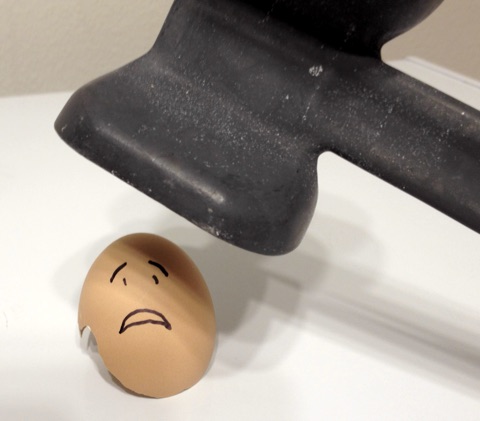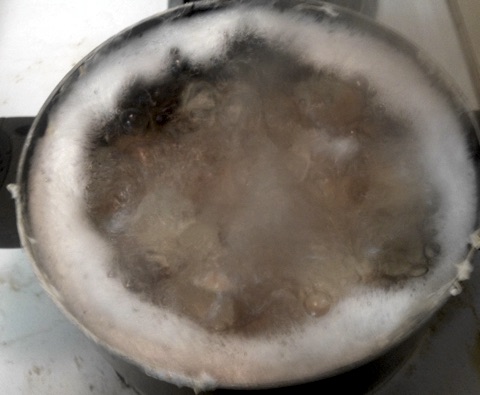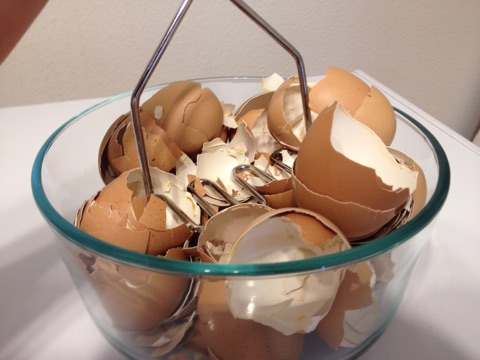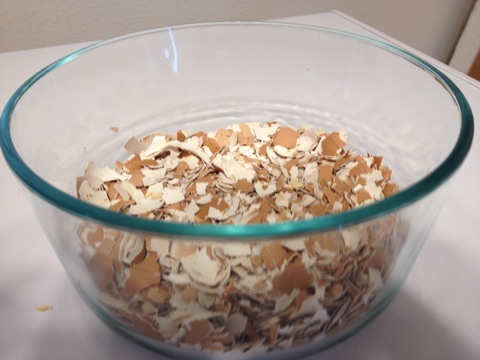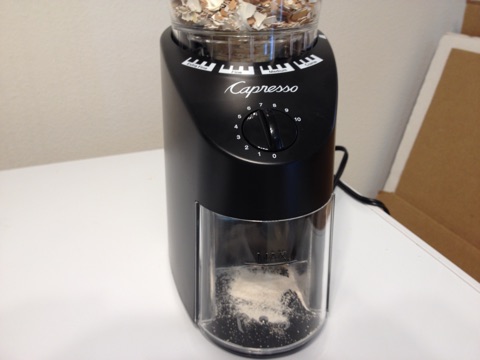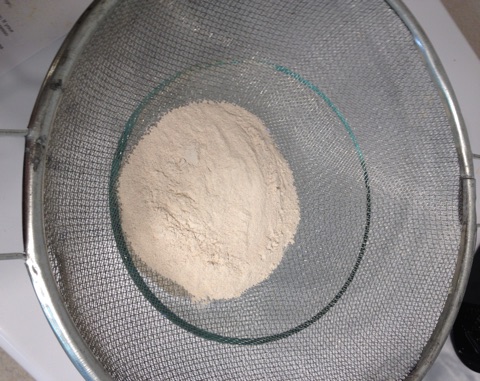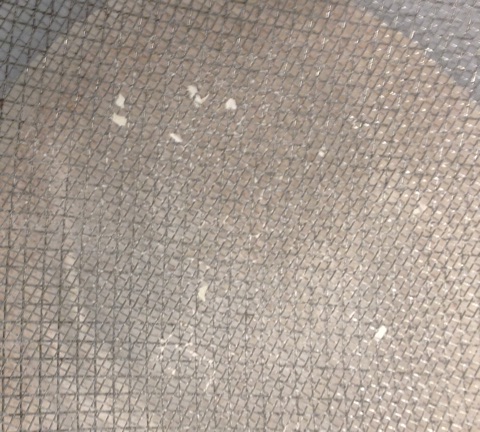Using eggshells as a source of calcium
Short summary
Eggshell calcium looks like a good source of calcium. It's generally low in heavy metals, reasonably absorbable, and inexpensive.
If you want to buy powdered eggshells:
- F.O.F. International looked like a great source for straight eggshell calcium powder, but they appear to have disappeared from the internet. If anyone manages to track them down or find a similar alternative, please leave a comment.
- There are a few eggshell calcium products available that are meant for pets.
If you want to buy a capsule version:
I'm only aware of two eggshell calcium capsule products. Both have more ingredients than I'd prefer, but could be good in a pinch:
- Swanson has Swanson Ultra 100% Natural Eggshell Calcium with Vitamin D3 available directly from the company, or on Amazon. In the UK, HealthMonthly is an affordable source. The ingredients are eggshell calcium, gelatin, magnesium stearate, microcrystalline cellulose (plant fiber), vitamin D-3 beadlets (dl-alpha tocopherol, modified food starch, medium-chain triglycerides, sodium ascorbate, sucrose, silica).
- Membrell / Redd Remedies has BONEhealth Original available directly from the company, or on Amazon. The ingredients are eggshell calcium, cholecalciferol (vitamin D3), magnesium citrate, vegetarian capsule (vegetable fiber and water). They appear to be in the middle of reformulating, so older bottles may have magnesium oxide, silicon dioxide, and magnesium stearate.
If you want to make your own:
- See my description below.
Absorbability and effectiveness
Eggshell calcium supplementation is not heavily studied, but the few studies I've been able to find all support its absorbability:
- Humans
- A placebo-controlled study found increased bone mineral density of the hip when taking eggshell calcium.
- A small pilot study (with no placebo control) found that eggshell calcium powder (when combined with supplemental vitamin D3 and magnesium) improved bone mass in people with osteoporosis or osteopenia, along with a reduction in pain. This suggests that it is well-absorbed and effective for those conditions, at least.
- Rats
- A study using an osteoporotic rat model showed eggshell calcium increasing bone mineral density, suggesting it is well-absorbed.
- A study of weanling rats compared eggshell calcium to straight calcium carbonate, showing similar (though strangely varied) absorption results.
- Piglets
- Studies using piglets showed better digestibility with eggshell calcium than with purified calcium carbonate.
Some people have mentioned digestive irritation with eggshell calcium. I'm wondering if too coarse of a grain size or insufficient stomach acid are the cause. If you have any experience or thoughts on this, please leave a comment.
What's in eggshells?
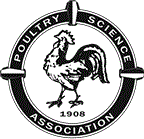
That is one cocky chicken.
...
Heh.
I'm sure the journal of the Poultry Science Association needs no introduction. We all have fond childhood memories of curling up by the fireplace and reading The Control of Bacillary White Diarrhea in Forced Draft Incubators by High Humidity. However, some of us may not have seen their more-recent analysis of the composition of eggshells, concluding that the composition of eggshell calcium appears to vary based on the chicken's diet and environment, but is high in calcium (~39%) and probably reasonably low in heavy metal content.
The analysis also compared Slovakian battery chicken eggshell calcium samples to samples of refined calcium carbonate and oyster shell calcium, along with comparing Dutch eggshell calcium from hens raised in different conditions. Here are their results combined together, with additional values from a 2012 analysis of F.O.F. International's eggshell calcium:
| Slovakian eggs | <5 μg/g |
| Dutch "four cereal" eggs | 2 μg/g |
| Dutch "basically pastured" eggs | 2 μg/g |
| Dutch battery eggs | 2 μg/g |
| Japanese eggs | 5 μg/g |
| F.O.F. International organic eggs | unknown |
| Refined calcium carbonate | 7 μg/g |
| Oyster shell calcium | 4,400 μg/g |
| Slovakian eggs | <50 ng/g |
| Dutch "four cereal" eggs | 18 ng/g |
| Dutch "basically pastured" eggs | 24 ng/g |
| Dutch battery eggs | 3 ng/g |
| Japanese eggs | <50 ng/g |
| F.O.F. International organic eggs | unknown |
| Refined calcium carbonate | 657 ng/g |
| Oyster shell calcium | 62 ng/g |
| Slovakian eggs | <0.50 μg/g |
| Dutch "four cereal" eggs | 1.10 μg/g |
| Dutch "basically pastured" eggs | 1.30 μg/g |
| Dutch battery eggs | 0.53 μg/g |
| Japanese eggs | <0.50 μg/g |
| F.O.F. International organic eggs | <0.002 μg/g |
| Refined calcium carbonate | 0.99 μg/g |
| Oyster shell calcium | 0.72 μg/g |
| Slovakian eggs | <0.2 μg/g |
| Dutch "four cereal" eggs | <0.2 μg/g |
| Dutch "basically pastured" eggs | <0.2 μg/g |
| Dutch battery eggs | <0.2 μg/g |
| Japanese eggs | <0.2 μg/g |
| F.O.F. International organic eggs | <0.002 μg/g |
| Refined calcium carbonate | <0.2 μg/g |
| Oyster shell calcium | <0.2 μg/g |
| Slovakian eggs | 3.75 μg/g |
| Dutch "four cereal" eggs | 6.00 μg/g |
| Dutch "basically pastured" eggs | 5.50 μg/g |
| Dutch battery eggs | 3.00 μg/g |
| Japanese eggs | unknown |
| F.O.F. International organic eggs | unknown |
| Refined calcium carbonate | 25.00 μg/g |
| Oyster shell calcium | 70.00 μg/g |
| Slovakian eggs | 22.4 μg/g |
| Dutch "four cereal" eggs | 23.0 μg/g |
| Dutch "basically pastured" eggs | 23.0 μg/g |
| Dutch battery eggs | 22.5 μg/g |
| Japanese eggs | 27 μg/g |
| F.O.F. International organic eggs | unknown |
| Refined calcium carbonate | 36.0 μg/g |
| Oyster shell calcium | 420 μg/g |
Many of those results surprise me, with battery eggs surprisingly low in heavy metals. It's possible that pastured hens have a more varied diet that increases both increase egg nutrients and eggshell heavy metals.
I conclude from the analysis that it's not worth being too obsessive about the source of the eggshells you use, unless you're able to get an analysis done on them.
Making your own eggshell powder
Here's how I make my own eggshell powder:
Supplies:
- Eggshells
- Your favorite tool for smashing eggshells (a potato masher is pretty fun).
Coffee grinder.
- Burr-grinding: My barista sister in law suggested a Capresso 560 (Amazon, Walmart) for me, and it seems to work well. Two downsides: it's expensive and larger grains can pass through the grinder, requiring multiple grinds to finish.
Blade-grinding: Dashing rogue Amazoniac suggested the Hamilton Beach 80374 (Amazon, Walmart) as working well, allowing you to grind the powder indefinitely to get the desired powderiness. I insist that's a word.
He mentioned that it allows for a very low sweep of the blade, preventing a problem I ran into with a cheap blade grinder where there'd be a hard-packed layer of incompletely-ground eggshell. You may have to tilt/shake these blade models for more-complete grinding.
- Fine-mesh sifter or strainer.
Instructions:
| Step 1: cleaning the eggshells |
|
| Step 2: smashin' the eggshells |
|
| Step 3: grindin' the eggshells |
|
| Step 4: separating out the fine powder |
|
| Step 5: storage and consumption |
|
Pet eggshell calcium
I'm only aware of three brands of eggshell calcium for pet use:
- Eggshellent Calcium is a straight eggshell calcium powder, but is meant for pets. For those outside the US, Jesse of pet-grub.com will ship anywhere for reasonable prices if you place a large order.
- Twin Beaks Aviary's Hatched is an eggshell calcium supplement meant for for birds.
- irRAWsistible Eggshell Calcium is available in some Canadian stores.
Conclusion
Eggshells are great, you should pulverize and devour them. But be nice about it.
